In today’s digital landscape, QR codes are everywhere—from product packaging to business cards, event invitations, and even digital billboards. With their increasing presence, QR codes are no longer mere black-and-white grids; they’ve evolved into powerful design elements that merge function with aesthetic appeal. A well-designed QR code can seamlessly blend into a brand’s visual identity, enhancing the user experience and providing a sense of cohesion across digital and physical mediums.
Snapseed QR code backgrounds, in particular, play a crucial role in this design transformation. They ensure that QR codes are not only visually engaging but also functional and scannable across various platforms. By integrating brand colors, patterns, and images, designers can elevate QR codes from simple data carriers to captivating, brand-consistent elements that catch the eye. In this article, we’ll explore why QR code backgrounds are essential in modern digital design, their impact on brand perception, and how designers can creatively use them to enhance user engagement and brand visibility.
Whether you’re a digital marketer, graphic designer, or brand strategist, understanding the significance of QR code backgrounds will empower you to make more intentional design choices that resonate with your audience. Let’s dive into the world of QR code backgrounds and discover how they can transform the way we interact with digital spaces.
Understanding QR Code Background Design Basics
In the digital age, QR codes have become essential tools for connecting the physical and virtual worlds. As their usage expands across marketing campaigns, product packaging, and event promotions, the design of QR codes has evolved beyond mere functionality. Understanding the basics of QR code background design is crucial for ensuring that these codes not only serve their purpose but also enhance the overall visual appeal of your project. A well-designed QR code with an appropriate background can create a seamless user experience while effectively representing your brand’s identity.
One of the fundamental aspects of QR code background design is maintaining high contrast between the code and its background. A clear distinction is vital for ensuring that the QR code can be scanned effortlessly. Designers should opt for dark QR codes against light backgrounds or vice versa, steering clear of overly complex patterns that can distract from the code itself. This emphasis on readability ensures that users can interact with the code without frustration, which is essential for maintaining engagement.
Integrating branding elements into the background of QR codes can significantly enhance brand recognition. By incorporating brand colors, logos, or subtle patterns, designers can create a cohesive look that aligns with the broader marketing materials. However, it’s important to strike a balance—while branding is essential, it should not overpower the QR code. Instead, the background should support the code’s functionality and aesthetic appeal, reinforcing the brand’s identity without compromising usability.
Finally, testing the QR code in its intended environment is a crucial step that should be considered. Designers must ensure that the QR code is easily scannable across various devices and platforms. This involves checking the design in different contexts, such as print advertisements, digital media, and product packaging. By refining the background based on testing feedback, designers can optimize the QR code for maximum effectiveness, ensuring that it not only looks good but works well in real-world applications. With these design basics in mind, you can create QR codes that are both functional and visually engaging, making them a valuable asset in your digital design toolkit.
Getting Started with Snapseed for QR Code Backgrounds
In an age where QR codes are pivotal for bridging the gap between offline and online experiences, creating visually appealing backgrounds for these codes can significantly enhance their impact. Snapseed, a powerful mobile photo editing app developed by Google, offers a range of tools that allow designers and marketers to craft unique and engaging QR code backgrounds. This guide will walk you through the essentials of getting started with Snapseed to elevate your QR code designs.
Download and Familiarize Yourself with Snapseed
Before diving into editing, ensure you have Snapseed installed on your mobile device. It’s available for both iOS and Android, and best of all, it’s free! Once installed, take a moment to explore its user-friendly interface. Familiarize yourself with essential tools like “Tools,” “Filters,” and “Adjustments,” which will be crucial for creating and modifying QR code backgrounds.
Importing Your Image
To create a custom QR code background, you first need an image to work with. This could be a solid color, a textured pattern, or even a photo that aligns with your brand’s identity. Open Snapseed and tap the “+” icon to import your chosen image. Once imported, you can crop or rotate the image as necessary, ensuring it fits the dimensions you have in mind for your QR code application.
Enhancing Your Background
Once you have your base image, it’s time to enhance it to make it suitable for your QR code. Snapseed offers various adjustment tools, such as brightness, contrast, saturation, and sharpness. Use these tools to create a balanced background that complements the QR code. For instance, if your QR code will be black, consider using a lighter background to ensure high contrast. You can also apply filters under the “Looks” section to add artistic effects that resonate with your branding.
Adding Textures and Overlays
To give your background a unique touch, explore Snapseed’s “Double Exposure” tool. This feature allows you to blend multiple images, which can create interesting textures or patterns. For example, you could overlay a subtle pattern on top of your background image to add depth without compromising the QR code’s readability. Adjust the opacity of the overlay to achieve the desired effect, ensuring the QR code remains the focal point.
Final Touches and Exporting
After you’ve enhanced your background and added any desired textures or overlays, it’s essential to conduct a final review. Zoom in to check that the background does not interfere with the QR code’s scannability. Once satisfied, tap the export icon in the top right corner to save your image. Snapseed allows you to save in high quality, ensuring that your design looks professional across various formats, whether for print or digital use.
Read more: Snapseed QR Code App Download and Install Guide: Apply Custom Filters
Step-by-Step Guide to Designing a QR Code Background with Snapseed
In today’s digital landscape, QR codes serve as crucial links between offline and online experiences. A visually appealing background can enhance the effectiveness of these codes while reinforcing your brand identity. This guide provides a thorough walkthrough for designing an attractive QR code background using Snapseed, a powerful mobile photo editing app.
Step 1: Download and Install Snapseed
- For iOS: Open the App Store, search for “Snapseed,” and click on “Get.”
- For Android: Open Google Play Store, search for “Snapseed,” and tap on “Install.”
Open the App: Locate the Snapseed icon on your home screen or app drawer and tap to launch it.
Step 2: Import Your Base Image
Select Your Image:
- Tap the “+” icon or “Open” button in the center of the screen to select an image to use as a background.
- This image could be a solid color, a gradient, a textured pattern, or a photograph that aligns with your brand.
Crop and Rotate:
- After importing, tap on “Tools” and select “Crop.”
- Adjust the dimensions to fit your intended use. Common aspect ratios include square (1:1) for social media posts and vertical (4:5 or 9:16) for stories.
- Use the “Rotate” option if necessary to orient your image correctly.
Step 3: Enhance Your Background
Adjust Basic Settings:
- Tap on “Tools” and choose “Tune Image.” This section allows you to adjust the overall look of your image.
- Brightness: Increase or decrease brightness to achieve the desired lightness or darkness.
- Contrast: Enhance the difference between the light and dark areas to add depth.
- Saturation: Adjust saturation to make colors more vibrant or muted, depending on your design needs.
- Sharpness: Increase sharpness for a clearer image, particularly if your background has text or essential details.
Tip: Aim for high contrast between the QR code (usually black) and the background to ensure the code is easily scannable.
Apply Filters (Optional):
- Go to the “Looks” section to explore various filters that can add character to your background.
- Experiment with different filters such as “Vintage,” “Noir,” or “Grainy Film” to see which complements your brand’s style.
- Keep in mind that the filter should enhance, not overshadow, the QR code.
Step 4: Add Textures or Overlays
Using Double Exposure:
- Navigate to “Tools” and select “Double Exposure.”
- Tap the “+” icon again to import another image you’d like to overlay (this could be a texture, pattern, or another graphic).
- After importing, use the “Blend” option to choose how you want to combine the two images. You can select from different blending modes such as “Overlay,” “Screen,” or “Multiply.”
- Adjust the opacity slider to control how prominent the overlay effect is.
Tip: Look for subtle textures (like a soft fabric pattern or a light bokeh effect) that enhance the background without overwhelming it.
Positioning the Overlay:
- Use the “Transform” tool if you need to resize, rotate, or reposition the overlay image. Make sure it fits well and adds interest to the background.
Step 5: Add Any Additional Elements
Incorporate Branding Elements:
- If desired, add a tagline, your brand’s name, or a logo. Tap on “Tools” and select “Text.”
- Choose a font that aligns with your brand identity and type in your text. Snapseed offers a range of fonts.
- Adjust the size, color, and placement of the text to ensure it is not interfering with the QR code’s readability.
Tip: Use contrasting colors for text to ensure it stands out against the background while maintaining balance.
Final Review:
- Before proceeding, review the overall design. Ensure the background and any text or branding elements do not distract from the QR code’s scannability.
Step 6: Final Adjustments
Make Final Adjustments:
- Return to the “Tune Image” tool if you need to make any adjustments. Fine-tune brightness, contrast, or saturation to achieve the desired look.
- Check that the background is relatively quiet; it should enhance the QR code rather than compete with it.
Step 7: Export Your Design
Save Your Work:
- Tap the export icon (the box with an arrow) in the top right corner.
- Choose to “Save” or “Export” your image. You can select the file type (JPEG or PNG) and quality. For print, choose the highest quality.
Test Your QR Code:
- Once you create your QR code using an online QR code generator, overlay it on your newly designed background.
- Test the QR code using different scanning apps on various devices to ensure it works seamlessly before finalizing any print or digital materials.
Best Practices for QR Code Backgrounds in Different Projects
Designing effective QR code backgrounds requires a strategic approach that aligns with your project’s specific goals. Whether you’re creating marketing materials, product packaging, event promotions, or digital content, understanding best practices can significantly enhance the impact of your QR codes. Below is a detailed guide covering best practices tailored to different project types.
Marketing Materials (Flyers, Posters, Brochures)
Key Considerations:
High Contrast: The QR code must stand out against its background. A dark QR code on a light background or vice versa is ideal to ensure it is easily scannable. Use tools like color contrast checkers to verify that your colors meet accessibility standards.
Simplicity: A cluttered background can detract from the QR code’s visibility. Choose a plain or lightly textured background that enhances the overall design without overwhelming the QR code.
Clear Call to Action (CTA): Adding a CTA near the QR code encourages users to engage. Phrases like “Scan for a discount,” “Join our newsletter,” or “Discover more” can drive curiosity and prompt scanning.
Example: If designing a flyer for a local restaurant, use an enticing image of the food as the background, but keep the area behind the QR code light and simple to draw attention to the code itself.
Product Packaging
Key Considerations:
Brand Consistency: The QR code background should reflect your brand’s identity. Use your brand colors, fonts, and imagery that resonate with your product’s message and target audience.
Informative Background: If using a complex background, make sure the QR code is still prominent. Consider placing it within a solid or slightly tinted box to help it stand out.
User-Friendly Design: Consumers should easily access and scan the QR code, even in small packaging formats. Test various sizes to determine the optimal size for both the code and the background.
Example: For a beverage, you can incorporate vibrant colors and graphics that convey the drink’s flavor but ensure the QR code area is straightforward to scan.
Event Promotions (Tickets, Banners, Invitations)
Key Considerations:
Dynamic and Engaging: Use lively colors and graphics that reflect the event’s theme while ensuring the QR code remains visible. Aim for a balanced design that captures attention without distraction.
Include Relevant Information: The background can also convey essential event details (date, time, location) while keeping the QR code as the focal point. This dual function enhances the design’s effectiveness.
On-Site Testing: If the QR code will be scanned at an event, test it in various lighting conditions. Adjust the design based on how the QR code performs in different settings.
Example: For a concert banner, use a dramatic, colorful background that reflects the music genre, but keep the QR code prominently displayed for ticket purchases or event details.
Digital Campaigns (Social Media, Email)
Key Considerations:
Optimized for Mobile: Design with mobile devices in mind, as most QR code scans occur on smartphones. Ensure the QR code and its background are visible on smaller screens, using images and text that are large enough.
Incorporate Animation: In digital formats, subtle animations can help draw attention to the QR code without overwhelming the viewer. However, ensure the animation does not distract from the QR code itself.
Provide a Shortened URL: Alongside the QR code, include a shortened URL for users who prefer typing it directly. This redundancy can increase overall engagement.
Example: In a social media ad for a new product, use eye-catching animations or graphics that highlight the QR code, prompting users to scan or click through for more information.
Educational Materials (Textbooks, Handouts)
Key Considerations:
Clear Instructions: Provide clear, concise instructions on what the QR code links to, primarily if it directs to supplemental resources like videos or interactive materials. Place this information near the QR code for easy access.
Accessible Design: Ensure the QR code is large enough to be scanned quickly and that the background remains conducive to readability.
Color Contrast: Opt for colors that cater to all users, including those with visual impairments. High contrast between the QR code and its background is essential for ensuring scannability.
Example: In an educational handout, use a clean layout with a straightforward background color that highlights the QR code, making it easy for students to access supplementary online resources.
Most Popular Snapseed QR Code Backgrounds
Snapseed is a versatile photo editing app that allows users to create stunning backgrounds for QR codes. By leveraging its various tools and features, you can design engaging and visually appealing backgrounds that enhance your QR code’s effectiveness. Here are some of the most popular styles and techniques for QR code backgrounds using Snapseed:
Blurred Backgrounds
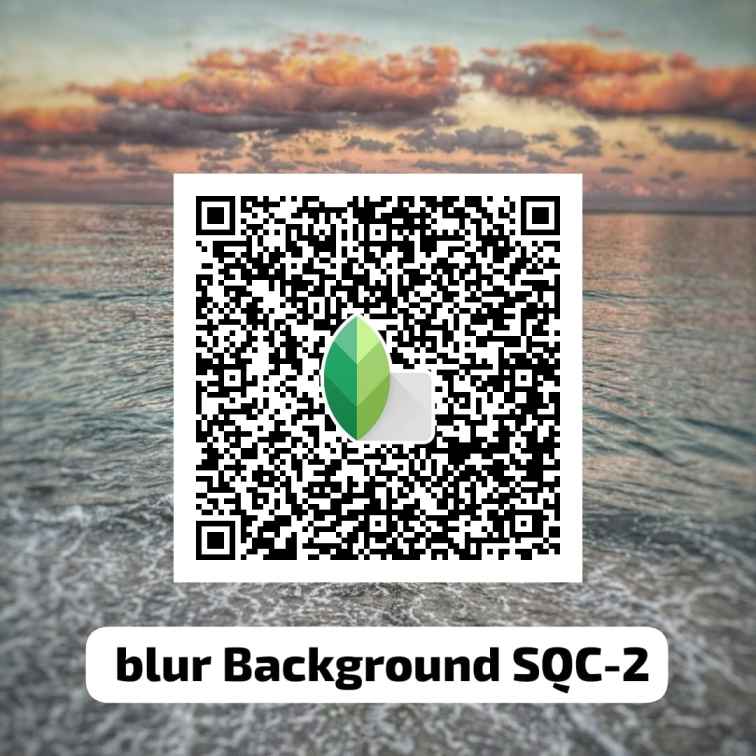
Description: A blurred background helps the QR code stand out by reducing distractions and enhancing focus. This style is particularly effective for promotional materials where you want the QR code to be the focal point.
How to Create:
- Import Your Image: Choose a vibrant image that reflects your brand or message.
- Use the Blur Tool: Navigate to the “Tools” menu, select “Lens Blur,” and adjust the intensity to create a soft-focus effect around the QR code area.
- Overlay the QR Code: Position your QR code over the blurred area for maximum visibility.
Example: A blurred image of a product with the QR code placed centrally, allowing customers to scan without distractions.
Textured Backgrounds
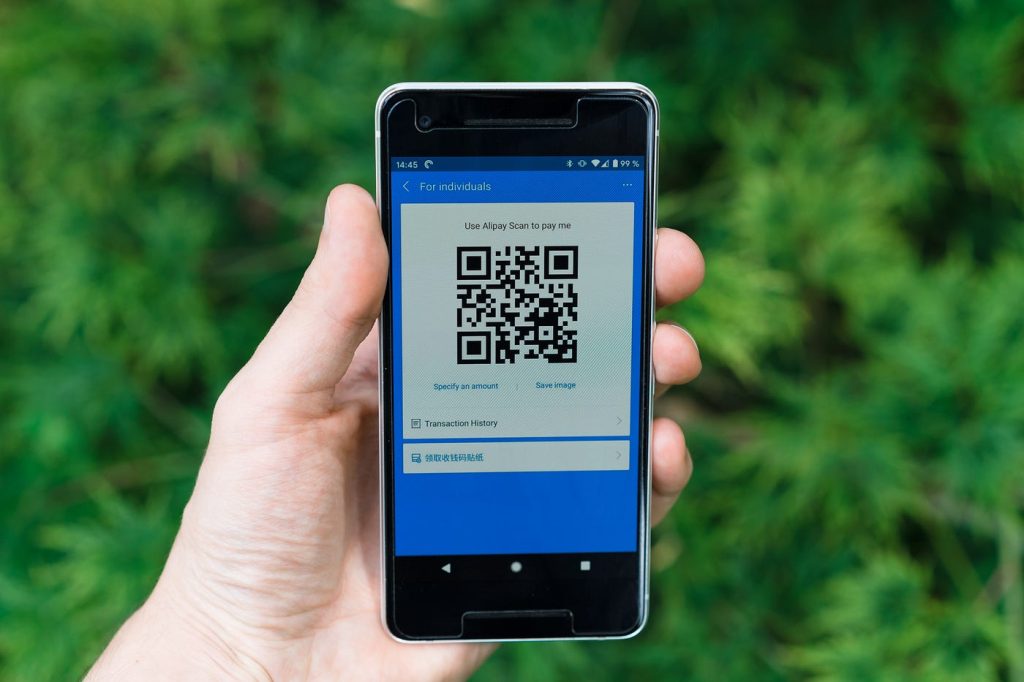
Description: Adding textures can give depth and interest to your QR code backgrounds. Textured backgrounds work well for artistic and creative projects.
How to Create:
- Choose a Texture: Find a high-quality texture image (like paper, wood, or fabric).
- Adjust the Texture: Import the texture image into Snapseed, then use the “Double Exposure” tool to blend it with a base image. Adjust the opacity to ensure the QR code remains prominent.
- Add the QR Code: Place the QR code on top of the textured background.
Example: A wooden texture background with a QR code promoting a rustic craft fair, enhancing the thematic connection.
Gradient Backgrounds
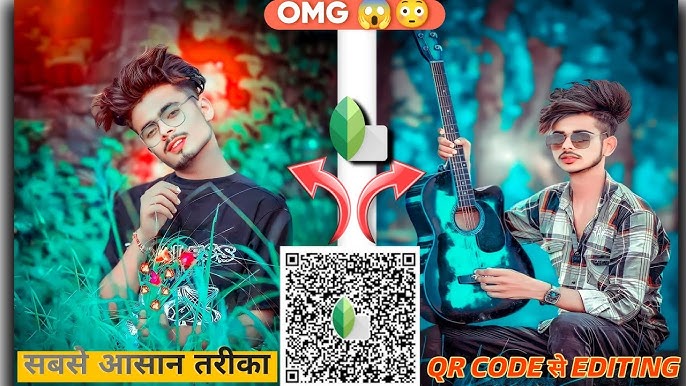
Description: Gradient backgrounds create a modern, stylish look that is visually appealing and can be customized to match brand colors.
How to Create:
- Use the Brush Tool: Start with a solid-color image as your base. Paint with different colors to create a gradient effect using the “Brush” tool.
- Layering Colors: Blend two or more colors using varying brush opacities to achieve a smooth gradient transition.
- Position the QR Code: Overlay the QR code on the gradient background, ensuring enough contrast for easy scanning.
Example: A soft blue-to-green gradient background with a white QR code, ideal for a tech company’s marketing campaign.
Solid Color Backgrounds with Patterns
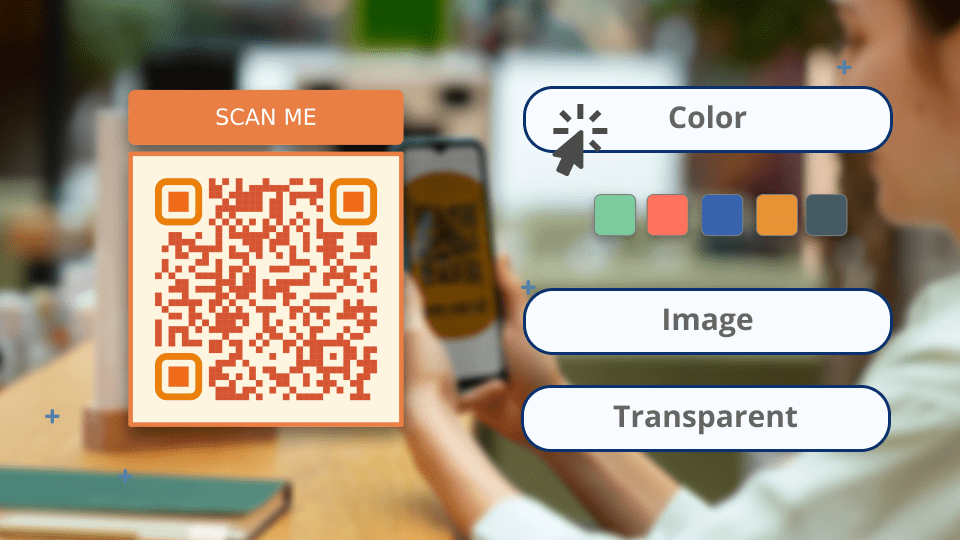
Description: Solid color backgrounds with subtle patterns can add personality without overwhelming the QR code. This style is famous for corporate designs and minimalistic projects.
How to Create:
- Select a Base Color: Choose a solid color that reflects your brand identity.
- Add Patterns: Use the “Text” tool to overlay a repeating pattern or use stickers from the Snapseed library for added texture.
- Place the QR Code: Position the QR code in a way that contrasts nicely with the background and pattern.
Example: A navy blue background with white polka dots featuring a bright yellow QR code for a playful touch.
Overlaying Images with Light Effects
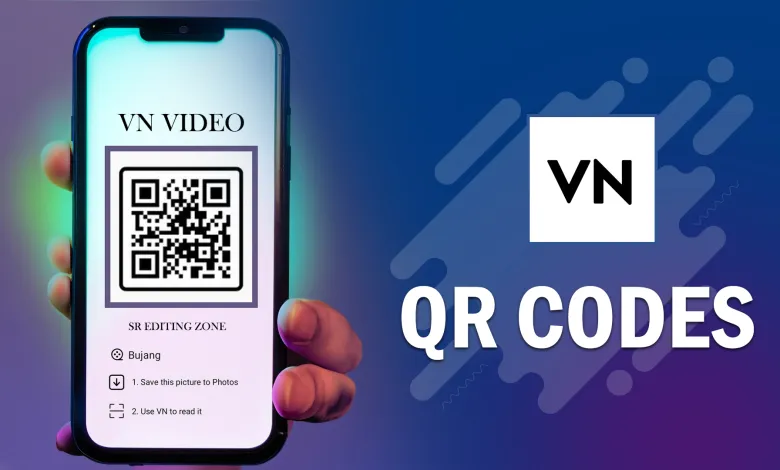
Description: Light effects, such as flares or bokeh, can create a captivating background that draws attention to the QR code. This style is often used for event promotions and parties.
How to Create:
- Choose a Background Image: Start with an image that has a lot of natural light or a plain background.
- Add Light Effects: Use the “Double Exposure” feature to add images of light flares or bokeh effects, adjusting the opacity to create a harmonious blend.
- Incorporate the QR Code: Ensure the QR code is placed where it remains straightforward to scan amidst the light effects.
Example: An elegant background with soft bokeh lights for a wedding invitation, with the QR code leading guests to RSVP details.
FAQs About Designing QR Code Backgrounds with Snapseed
What is Snapseed, and how can it help with QR code background design?
Snapseed is a powerful photo editing application developed by Google that allows users to enhance and manipulate images quickly. It provides various tools and features, such as filters, brushes, and overlays, making it ideal for creating unique backgrounds for QR codes. With Snapseed, you can adjust colors, add textures, apply blurs, and layer images to design visually appealing backgrounds that ensure your QR codes stand out.
Can I create a blurred background for my QR code using Snapseed?
Yes, you can easily create a blurred background in Snapseed. To do this, import your desired image and navigate to the “Tools” menu. Select “Lens Blur” and apply the blur effect to your image, adjusting the intensity and focus area as needed. This technique helps draw attention to the QR code by minimizing distractions from the background.
What are some best practices for ensuring my QR code is scannable against its background?
To ensure your QR code is easily scannable, follow these best practices:
- High Contrast: Use colors that provide a strong contrast between the QR code and the background.
- Simple Backgrounds: Avoid cluttered or busy backgrounds that can make scanning difficult.
- Testing: Always test your QR code with multiple devices and scanning apps to confirm it scans properly under various conditions.
How can I use Snapseed to create a gradient background for my QR code?
To create a gradient background in Snapseed, start with a solid color image as your base. Use the “Brush” tool to apply a second color, painting over the first with varying opacities to create a smooth gradient effect. Experiment with different colors that align with your branding or project theme, and then overlay your QR code on the gradient background to achieve a modern and stylish look.
Are there any tips for using Snapseed to enhance my QR code backgrounds for seasonal events?
Yes, here are some tips for enhancing QR code backgrounds for seasonal events using Snapseed:
- Choose Thematic Images: Select images that reflect the season or occasion (e.g., autumn leaves for fall, snowflakes for winter).
- Add Text and Graphics: Utilize the “Text” tool to include festive greetings or event details.
- Adjust Colors: Use color correction tools to adjust hues, making them more vibrant or aligning them with the seasonal theme. This creates an engaging background that enhances the QR code’s appeal and relevance for the event.
Additional Tips for Snapseed QR Code Backgrounds Design
Utilize Snapseed’s Filters Wisely: Explore Snapseed’s diverse range of filters to enhance the visual appeal of your background. Filters like “Vintage,” “Grunge,” or “HDR Scape” can add character and style. However, use them sparingly to ensure the QR code’s visibility is manageable.
Maintain a Clear Focus Area: When designing your background, ensure there’s a clear focus area where the QR code will be placed. This can be achieved by creating a subtle vignette effect around the QR code location, drawing attention to it.
Experiment with Layering: Use Snapseed’s “Double Exposure” tool to overlay multiple images. This technique can create interesting textures or patterns without losing clarity. Just ensure that the QR code remains prominent and scannable.
Color Harmony: Choose background colors that complement the colors in your QR code. Use tools like “Tune Image” to adjust brightness, contrast, and saturation, ensuring a cohesive color palette that aligns with your brand.
Test Different Shapes and Sizes: Don’t hesitate to experiment with different shapes and sizes for your QR code. While the traditional square shape is standard, using rounded corners or incorporating it into a larger design can make it more visually appealing.
Incorporate Brand Elements: To reinforce brand identity, add logos, taglines, or brand colors to the background. Use the “Text” tool to incorporate short, catchy phrases that encourage scanning the QR code.
Use Negative Space: Negative space is the area around and between objects. In your design, use negative space effectively to prevent clutter and allow the QR code to breathe. This will make it stand out more prominently.
Pay Attention to QR Code Size: Ensure your QR code is large enough to be scanned easily but not so large that it dominates the entire design. A good rule of thumb is to keep it at least 1 inch (2.5 cm) in size when printed.
Preview and Adjust: After designing, always preview how the QR code looks against the background. Make adjustments as needed to enhance clarity and scannability. Use Snapseed’s zoom feature to check details.
Save and Export Settings: When you finish your design, save your project in Snapseed to keep the original edits intact. Export the final image in a high-resolution format suitable for printing or online use, ensuring the QR code retains its clarity.
Conclusion
Designing practical QR code backgrounds using Snapseed can significantly enhance your digital and print projects. By understanding the basics of design and leveraging Snapseed’s powerful features, you can create visually appealing and functional backgrounds that draw attention to your QR codes.
In this guide, we explored various design styles, including blurred, textured, gradient, and seasonal backgrounds, each offering unique advantages for different contexts. We also discussed best practices to ensure your QR codes remain scannable, emphasizing the importance of color contrast, simplicity, and effective use of negative space.
Additionally, the tips provided can help you refine your designs, allowing for creative expression while maintaining clarity and brand identity. Remember, the goal is to create a seamless integration between your QR code and its background, making it easy for users to engage with your content.
With these insights and techniques, you are well-equipped to elevate your QR code designs, making them not only functional but also visually striking. So, dive into Snapseed, experiment with different styles, and watch as your QR codes become powerful tools for interaction and engagement in your projects.

